Bringing the Mediterranean Home: The Art and Soul of Mediterranean Garden Design
Close your eyes for a moment. Visualize yourself stepping outside into your garden, the warm sun kissing your skin, the scent of lavender and rosemary filling the air, and the gentle sound of water trickling from a fountain. This isn’t a daydream about your next vacation—it could be your backyard. With the right ideas it is not difficult to create a Mediterranean garden, where every day feels like a retreat to the sun-soaked coasts of Italy, Greece, or Spain.
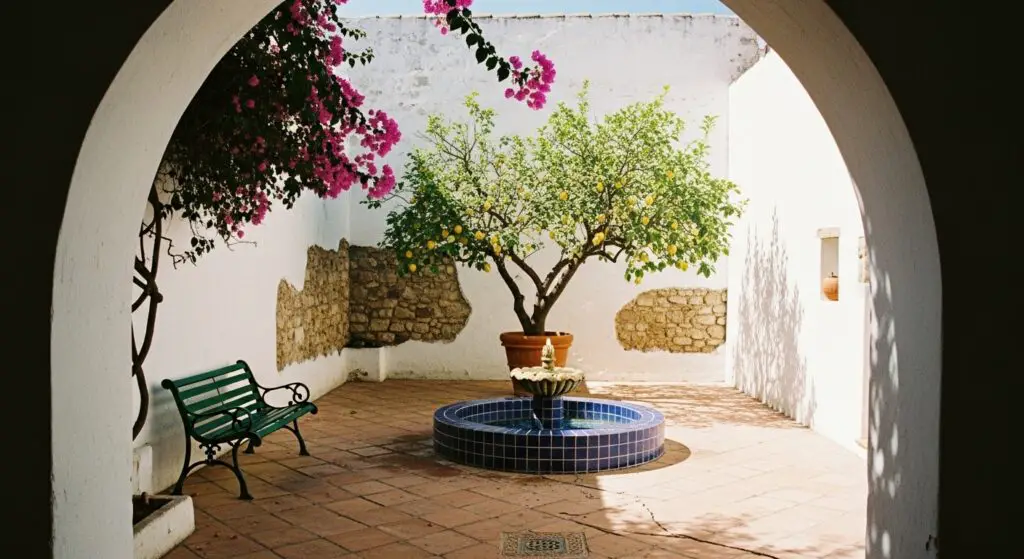
You know that feeling when you travel somewhere beautiful and think, “I wish I could bring a piece of this home”? That’s exactly what we’re going to explore today. Mediterranean garden design isn’t just about plants and pathways—it’s about capturing a lifestyle, a mood, a way of living that celebrates outdoor living, simplicity, and connection to nature.
What Makes Mediterranean Gardens So Special?
There’s something undeniably alluring about Mediterranean gardens. Maybe it’s their relaxed elegance or the way they seem to embrace imperfection. Unlike formal English gardens with their rigid structure and constant maintenance demands, Mediterranean gardens have a certain wildness to them—a controlled chaos that feels both intentional and natural.
The magic of Mediterranean garden design lies in its ability to create spaces that are both beautiful and functional. These gardens evolved in regions with hot, dry summers and mild, wet winters, so they’re inherently sustainable and water-wise. But beyond practicality, they’re designed for living—think shaded courtyards for escaping the midday heat, fragrant herbs near the kitchen, and comfortable seating areas for gathering with friends and family.
What I love most about Mediterranean garden design is how it connects us to ancient traditions. These gardens draw inspiration from Roman peristyles, Moorish courtyards, and rustic farmhouses that have existed for centuries. There’s a sense of timelessness that makes them feel both old and new at the same time.
The Essential Elements of Mediterranean Garden Design
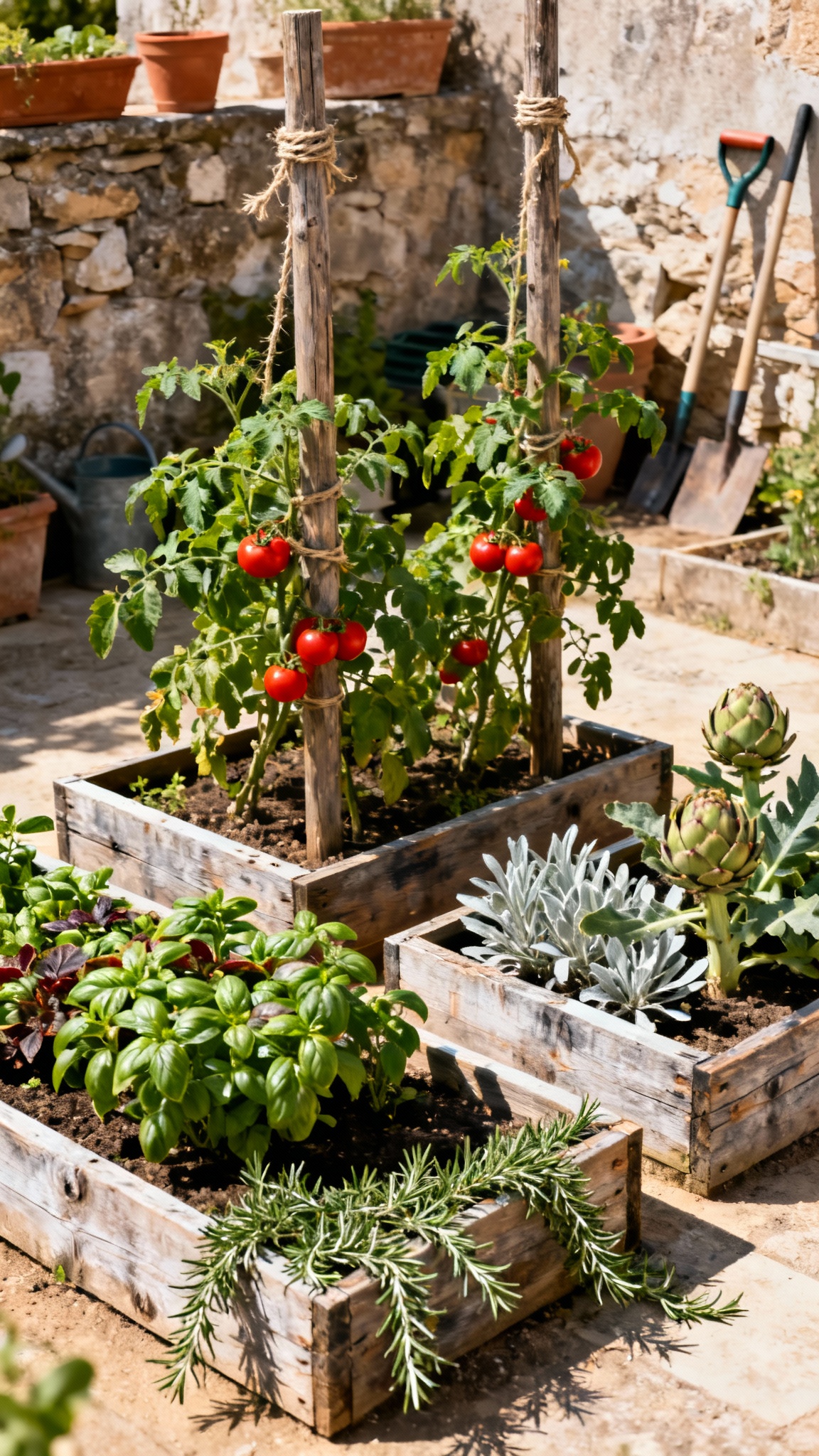
Creating an authentic Mediterranean garden isn’t about following strict rules—it’s about understanding the key elements and adapting them to your own space and climate. Let’s break down the fundamental components that give these gardens their distinctive character.
Climate Considerations
First things first: Mediterranean gardens thrive in specific conditions. They’re designed for regions with hot, dry summers and mild, wet winters. But here’s the good news—even if you don’t live in a Mediterranean climate, you can still create a garden with this feel. You’ll just need to make some adjustments.
If you’re in a cooler, wetter climate, focus on creating microclimates with south-facing walls, sheltered courtyards, and well-draining soil. In hotter, more humid areas, you might need to increase air circulation and choose plants that can handle both heat and humidity.
The Foundation: Hardscaping
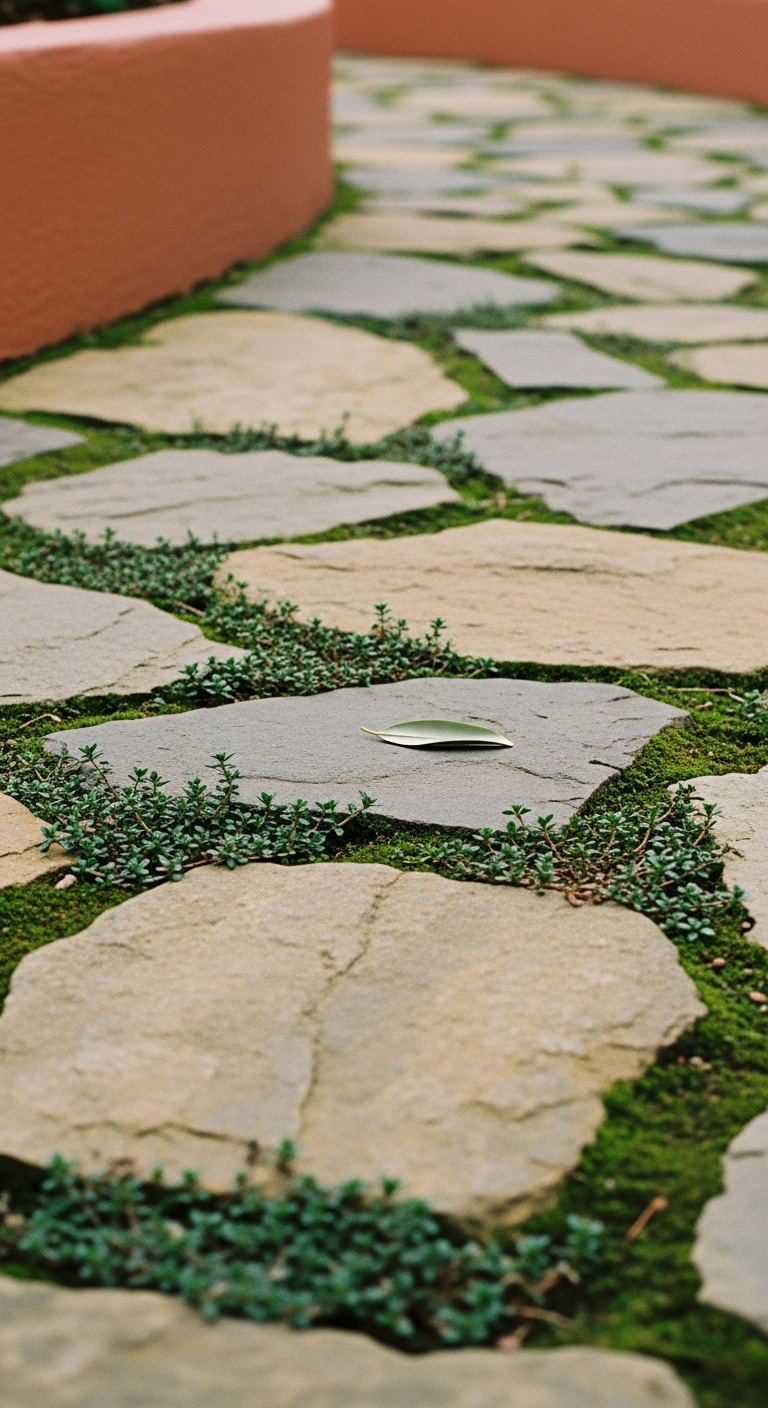
The bones of any Mediterranean garden are its hardscaping elements. Think stone pathways, terracotta tiles, and weathered walls. These materials not only look beautiful but also help regulate temperature and create structure.
For pathways, consider using irregular flagstones with creeping thyme or other drought-tolerant groundcovers growing between them. This creates that aged, settled look that makes Mediterranean gardens feel like they’ve been there forever.
Walls are another crucial element. They create privacy, define spaces, and provide vertical surfaces for climbing plants. In traditional Mediterranean garden design, walls are often rendered in warm earth tones or left natural with exposed stone.
Creating Shade and Shelter
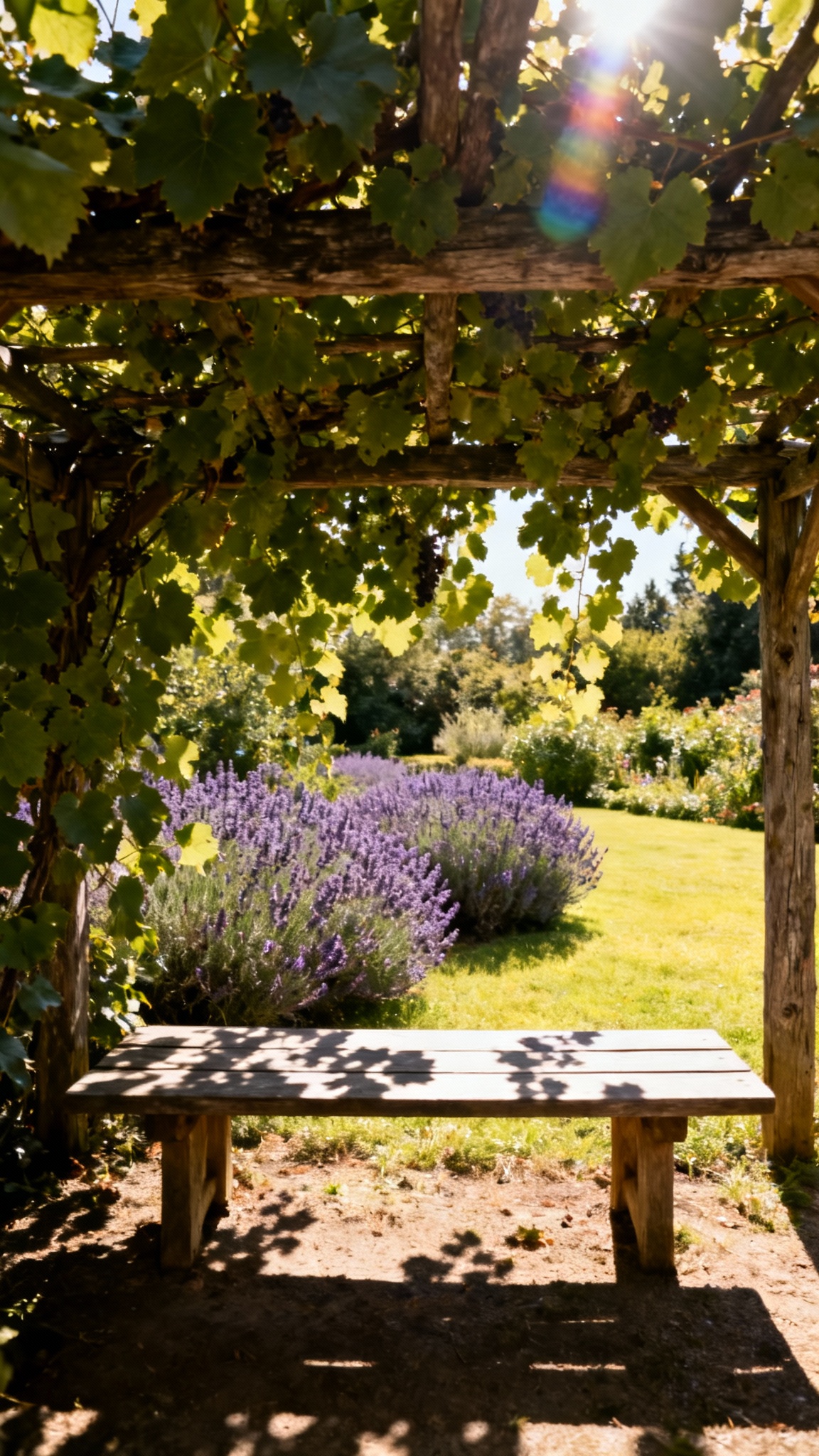
One thing Mediterranean gardens do exceptionally well is create comfortable outdoor spaces. They understand that you can’t enjoy a garden if you’re baking in the sun.
Pergolas covered with grapevines, wisteria, or bougainvillea provide dappled shade and create intimate outdoor rooms. Umbrellas, shade sails, and even strategically planted trees can all help create those cool retreats where you’ll want to spend hours with a book and a cool drink.
Plant Selection: The Heart of Mediterranean Garden Design
Plants are what bring a Mediterranean garden to life, but choosing the right ones is crucial. The key is selecting species that thrive in sunny, well-drained conditions and have that characteristic silvery-green or gray-green foliage.
The Mediterranean Plant Palette
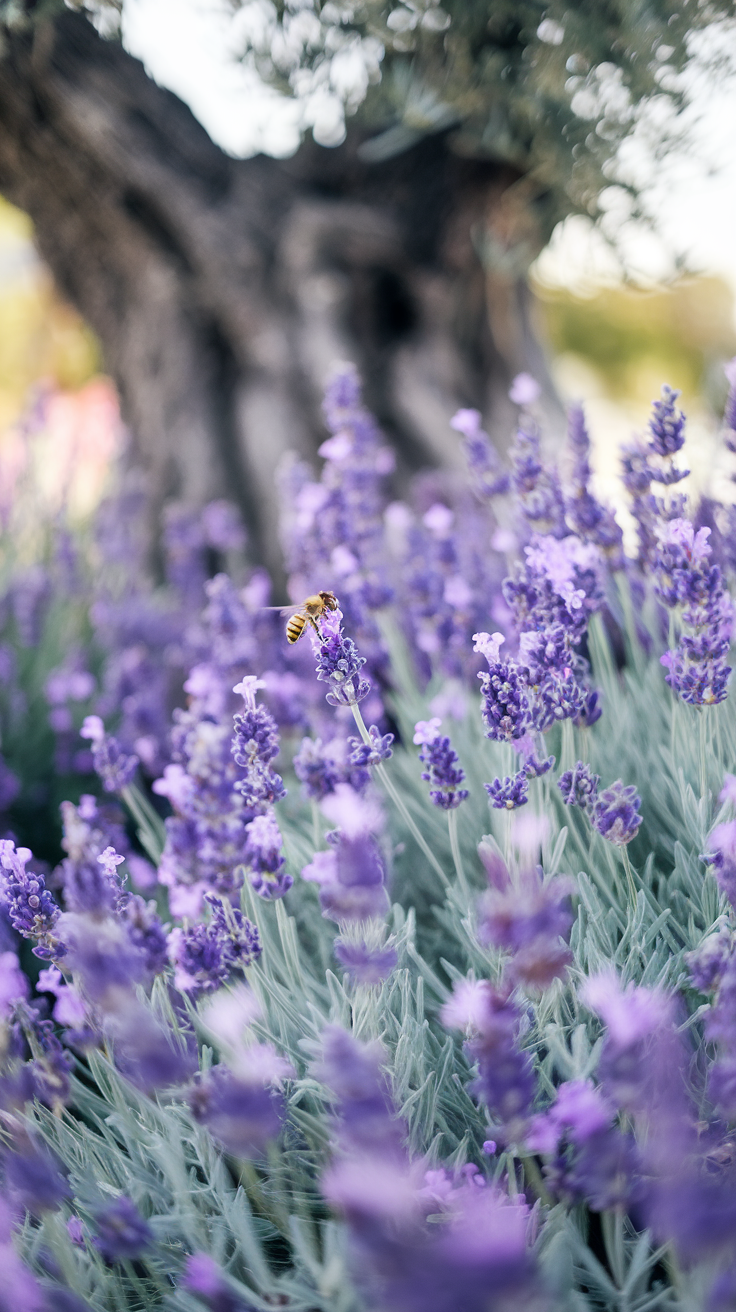
When I think about Mediterranean garden design ideas, certain plants immediately come to mind. Lavender, of course—with its purple spikes and heavenly scent. Rosemary, with its aromatic needles and delicate blue flowers. Olive trees, with their gnarled trunks and silvery leaves.
But don’t stop there. Consider adding:
- Santolina for its mounds of silver foliage and yellow button flowers
- Russian sage for its tall, airy wands of purple-blue
- Nepeta (catmint) for its long-blooming, pollinator-friendly flowers
- Artemisia for its soft, silvery foliage
- Thyme, oregano, and other herbs that double as culinary ingredients
Trees and Large Shrubs
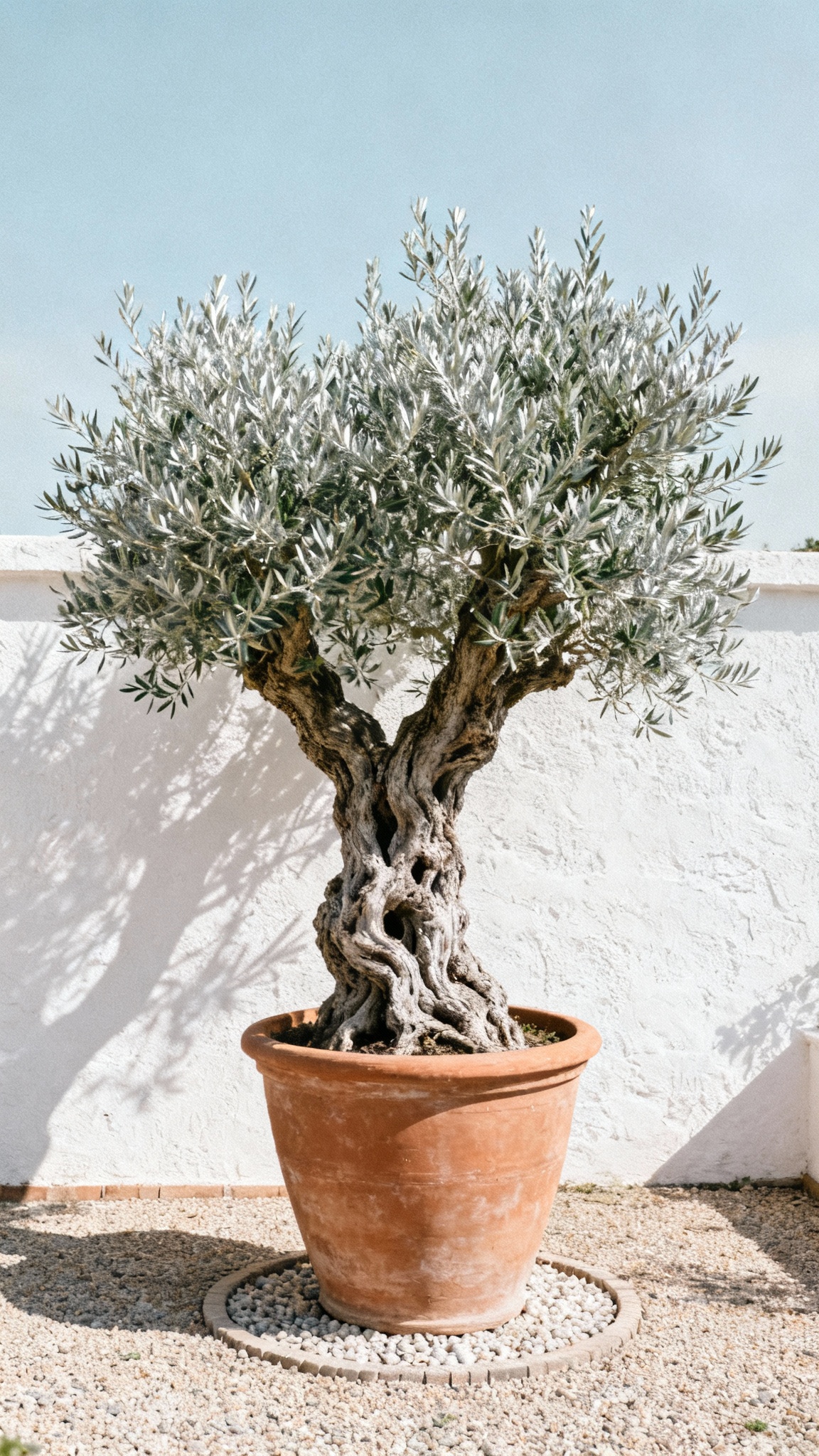
The structure of your Mediterranean garden comes from its larger plants. Olive trees are iconic, but they’re not your only option. Italian cypress creates dramatic vertical accents, while stone pines offer broad canopies of shade.
For smaller spaces, consider dwarf varieties or container-grown specimens. A potted olive tree can be just as effective as one planted in the ground, and it gives you flexibility if you’re dealing with harsh winters.
Seasonal Interest
One misconception about Mediterranean gardens is that they look good only in summer. The best designs offer year-round interest. Evergreen herbs and shrubs provide structure in winter, while bulbs like freesia and anemone kick off the spring season. Summer brings the full explosion of color, and fall might offer a second bloom from plants like rockrose and sage.
Hardscaping and Features: Adding Character to Your Mediterranean Garden
Beyond the basic structure, thoughtful hardscaping elements can elevate your Mediterranean garden design from good to great. These are the details that give your space personality and make it uniquely yours.
Water Features

Despite originating in dry climates, Mediterranean gardens often incorporate water features. The contrast between the arid landscape and the cooling presence of water creates a powerful sensory experience.
You don’t need a massive fountain—though if you have the space and budget, go for it! A simple wall-mounted spout, a small bubbling urn, or even a narrow rill can provide that soothing sound of moving water. In traditional Mediterranean garden design landscaping, water features are often tiled in shades of blue or turquoise, creating that brilliant contrast against earthy surroundings.
Terracing and Levels
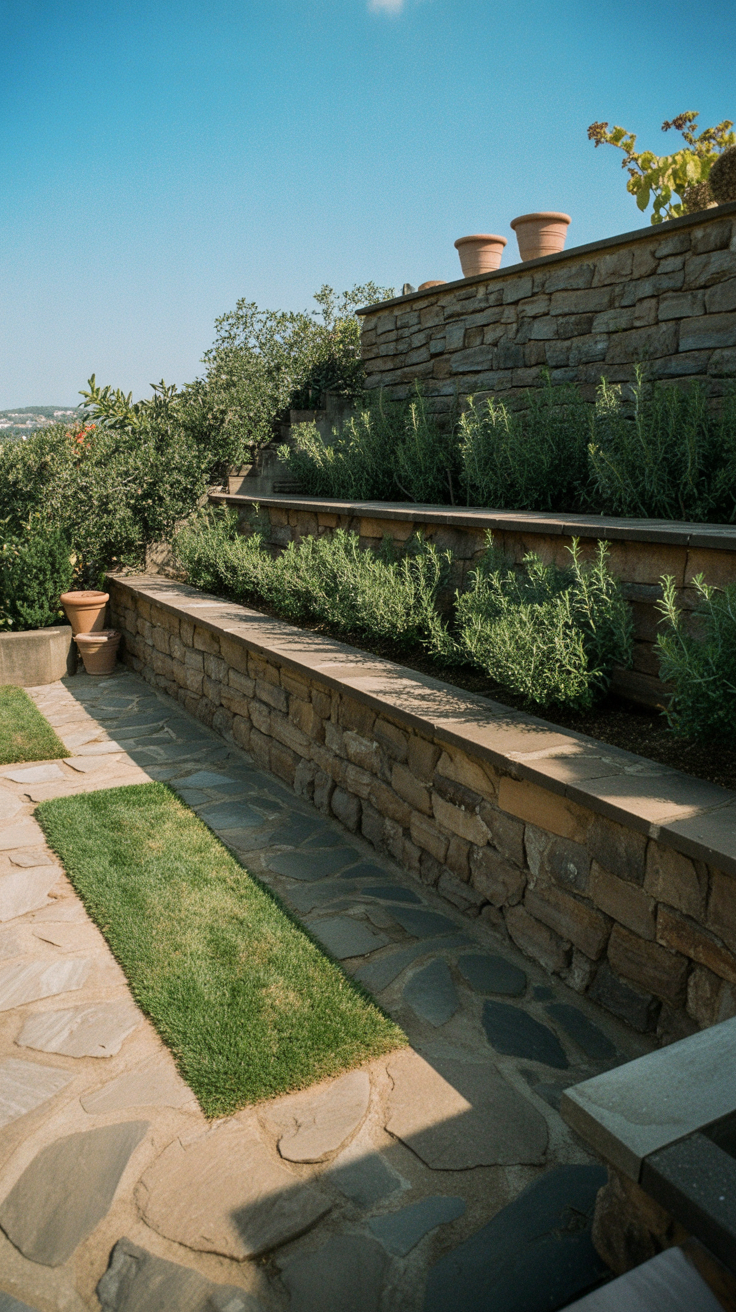
Many Mediterranean regions are hilly, so terracing is a natural part of the landscape. Even on a flat site, creating different levels adds interest and helps define separate garden “rooms.”
Retaining walls can be made from stone, rendered concrete, or even gabions filled with local rock. The key is to make them look substantial and settled, as if they’ve been there for ages.
Outdoor Living Areas
What I love most about Mediterranean garden design ideas is how they prioritize outdoor living. These aren’t gardens meant to be viewed from a distance—they’re gardens meant to be lived in.
Create comfortable seating areas with weather-resistant furniture. Add an outdoor dining table for al fresco meals. Consider an outdoor kitchen or barbecue area. Even a simple bench positioned to catch the evening sun can become a cherished spot.
Water-Wise Irrigation: The Practical Side of Mediterranean Garden Design
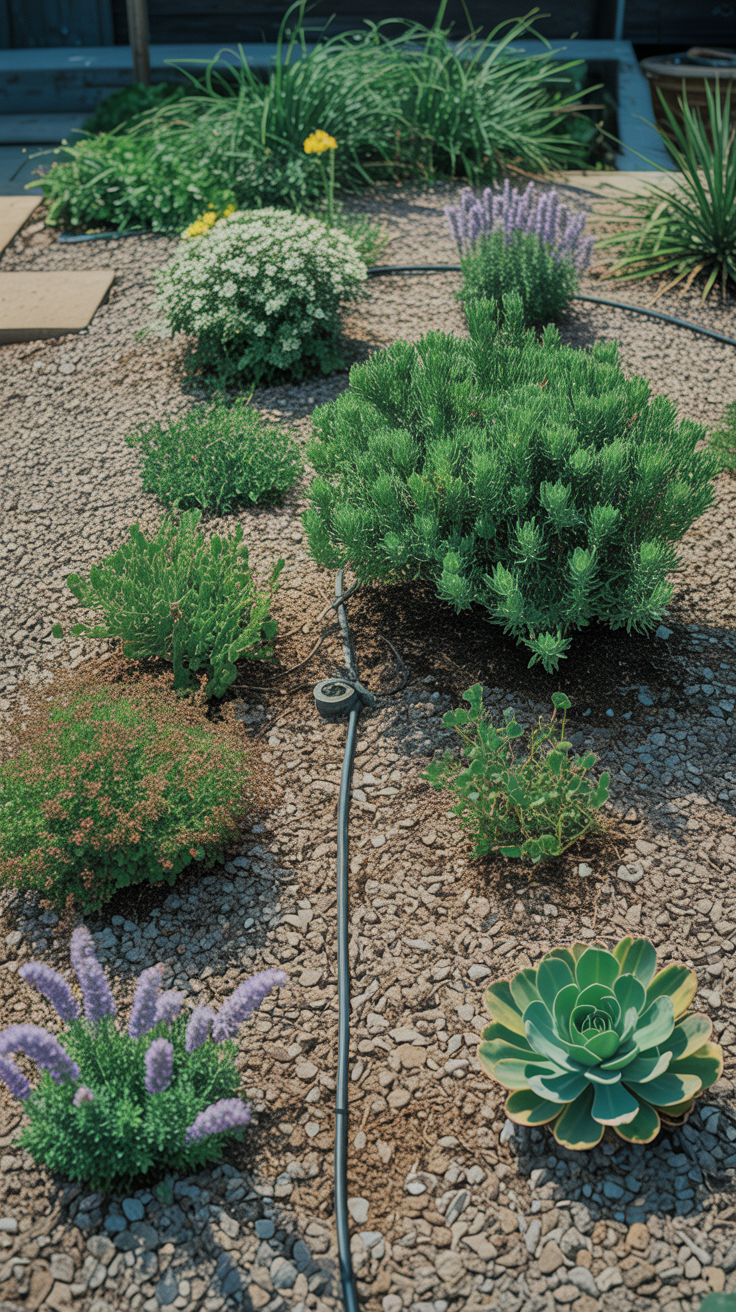
Let’s talk about something practical but essential: water. Mediterranean gardens are inherently water-wise, but they still need some irrigation, especially when getting established.
Efficient Watering Systems
Drip irrigation is the gold standard for Mediterranean garden design. It delivers water directly to the plant roots, minimizing evaporation and waste. Combine this with a smart controller that adjusts watering based on weather conditions, and you’ve got a system that’s both efficient and low-maintenance.
Water Conservation Techniques
Beyond irrigation, there are other ways to make your Mediterranean garden more water-wise:
- Group plants with similar water needs together
- Apply mulch generously to retain soil moisture
- Use rain barrels or cisterns to collect water
- Choose drought-tolerant varieties once plants are established
Soil Preparation
Good drainage is crucial for Mediterranean plants. Most hate having “wet feet.” If you have heavy clay soil, amend it with gravel and organic matter to improve drainage. Raised beds or mounds can also help create the well-drained conditions these plants love.
Creating Your Mediterranean Haven: Step-by-Step
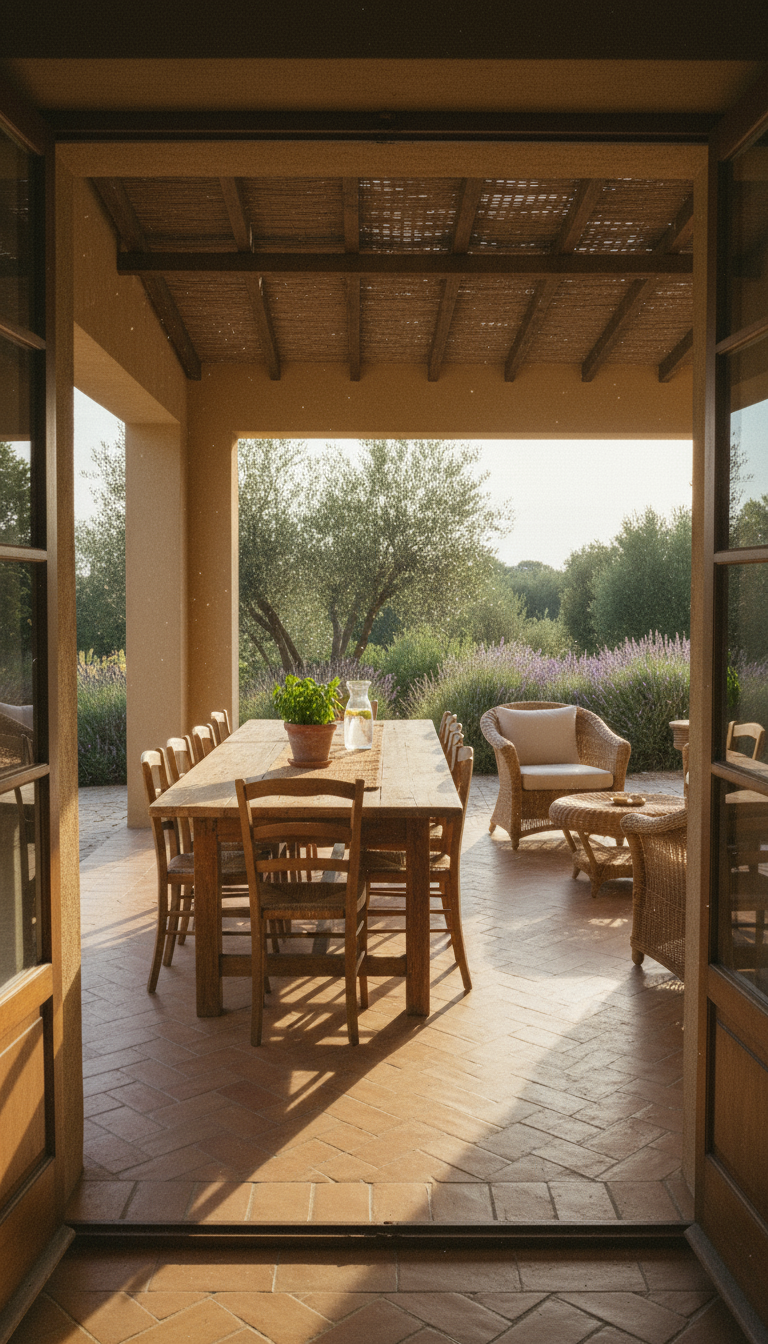
Feeling inspired but not sure where to start? Here’s a practical approach to creating your Mediterranean garden.
Assessment and Planning
First, take a good look at your space. Where does the sun hit throughout the day? What are your existing conditions? What views do you want to frame or screen?
Sketch out a rough plan, identifying where you might want seating areas, pathways, and key plantings. Think about how you’ll move through the space and what you’ll see from different vantage points.
Starting with the Bones
Begin with the hardscaping elements—pathways, walls, terraces, and major structures. These are the most permanent and expensive parts of your garden, so it’s worth getting them right.
If budget is a concern, remember that you can phase your project over time. Start with a good pathway and a small seating area, then add more elements as resources allow.
Soil Preparation and Planting
Before you plant, prepare your soil thoroughly. This is one area where you don’t want to cut corners. Good soil preparation will pay dividends for years to come.
When it comes to planting, start with the largest specimens—trees and major shrubs. These will give your garden structure and create the framework for everything else.
Adding the Finishing Touches
The final layer is where you add personality—containers, decorative elements, lighting, and furniture. These are the elements that make your garden feel complete and lived-in.
Maintaining Your Mediterranean Garden
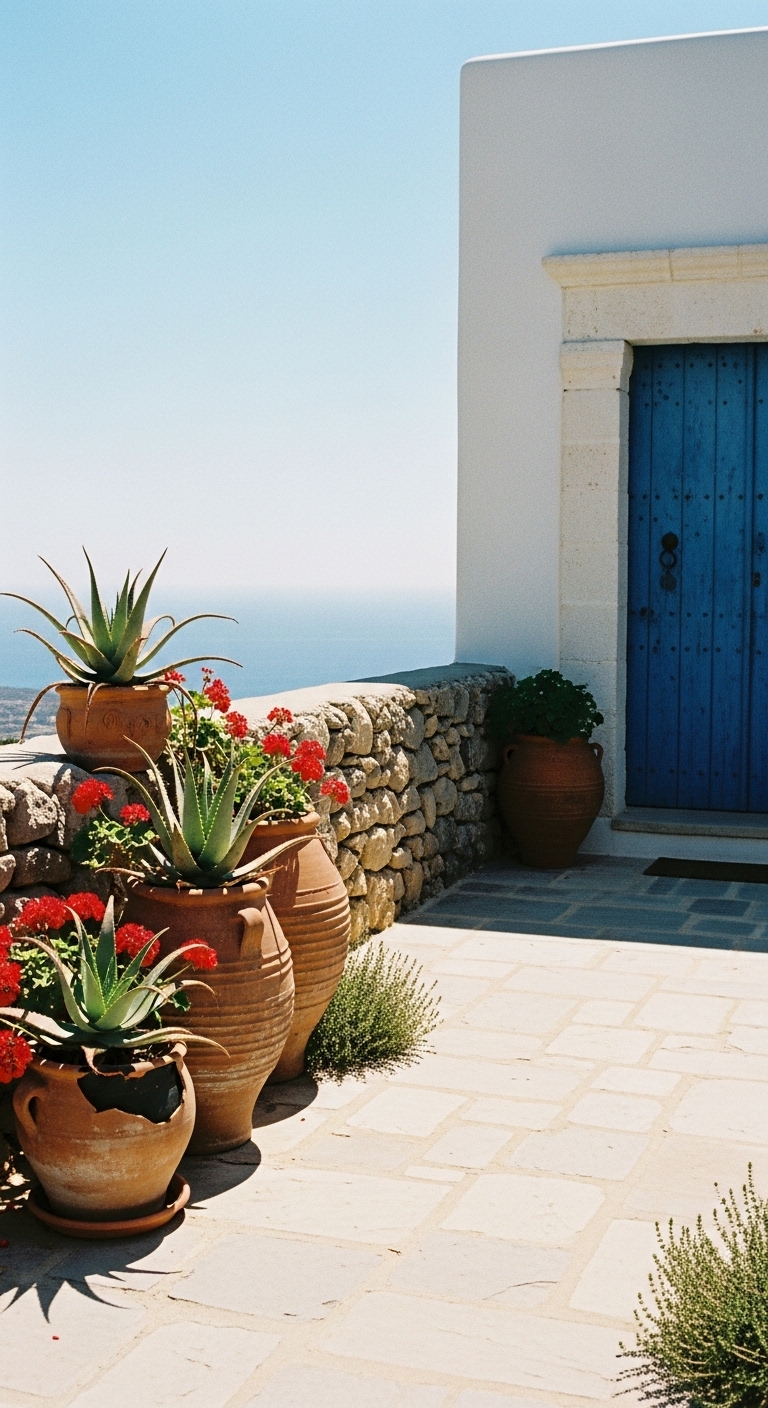
One of the joys of Mediterranean garden design is that it’s relatively low-maintenance compared to other garden styles. But “low-maintenance” doesn’t mean “no-maintenance.”
Seasonal Tasks
Spring is the time for major pruning and planting. Summer is mostly about enjoying your garden and doing minimal watering. Fall is for clean-up and possibly planting some cool-season annuals. Winter is the quiet season, perfect for planning and making any structural changes.
Pruning and Care
Many Mediterranean plants benefit from occasional pruning to maintain their shape and encourage new growth. Lavender, for example, should be pruned after flowering to prevent it from becoming woody.
Olive trees might need annual pruning to maintain their shape, and climbing plants like bougainvillea benefit from being trained onto their supports.
Pest Management
The good news is that many Mediterranean plants are naturally pest-resistant due to their aromatic oils. But you should still keep an eye out for common issues like aphids on new growth or powdery mildew in humid conditions.
Adapting Mediterranean Design to Your Region
Not everyone lives in a Mediterranean climate, but that doesn’t mean you can’t create a garden with this feel. Here’s how to adapt the style to different conditions:
For Cooler Climates
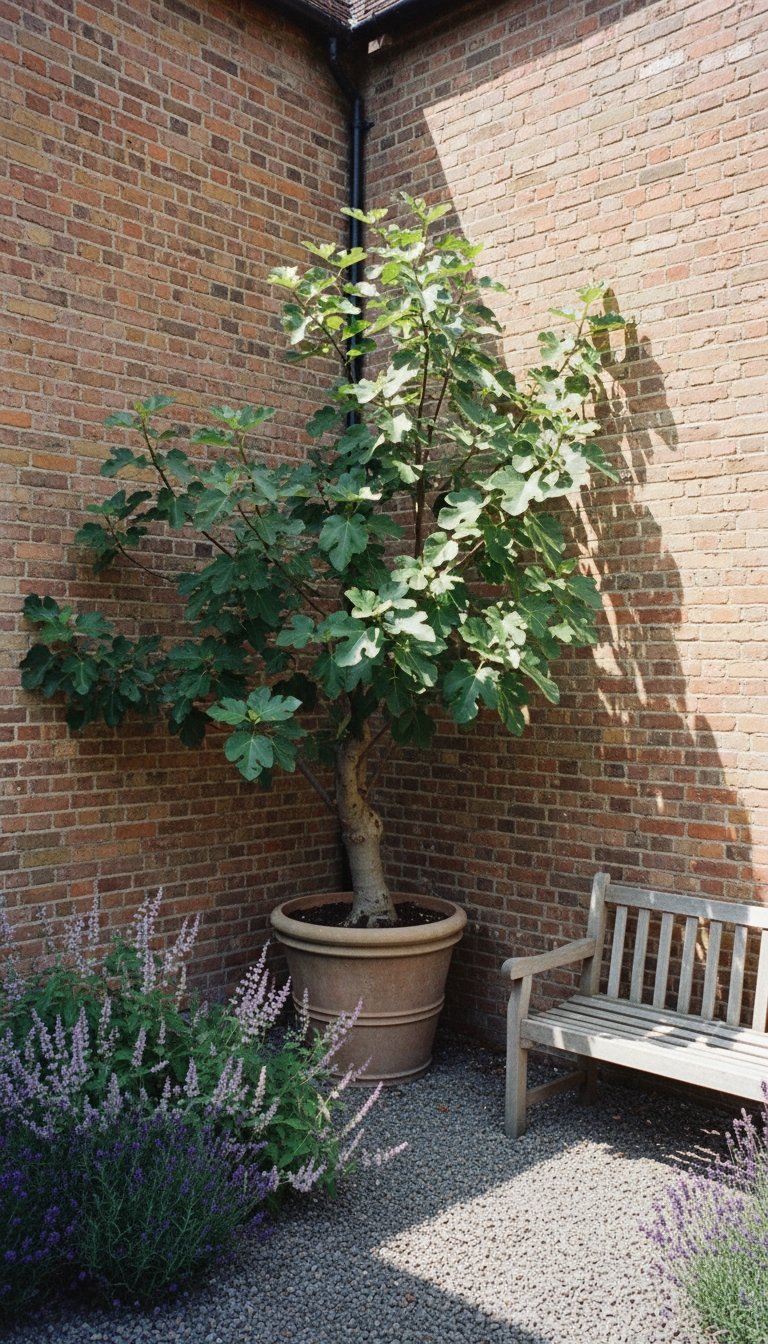
If you live in a region with cold winters, focus on creating microclimates. South-facing walls absorb heat and protect plants. Use containers for tender plants like olives that can be brought indoors in winter.
Consider substituting some traditional Mediterranean plants with hardier alternatives that have a similar look. For example, Russian sage can substitute for lavender in colder regions.
For Humid Climates
In areas with high humidity, good air circulation becomes even more important. Space plants further apart and avoid overcrowding. You might need to select varieties that are more resistant to fungal diseases.
For Small Spaces
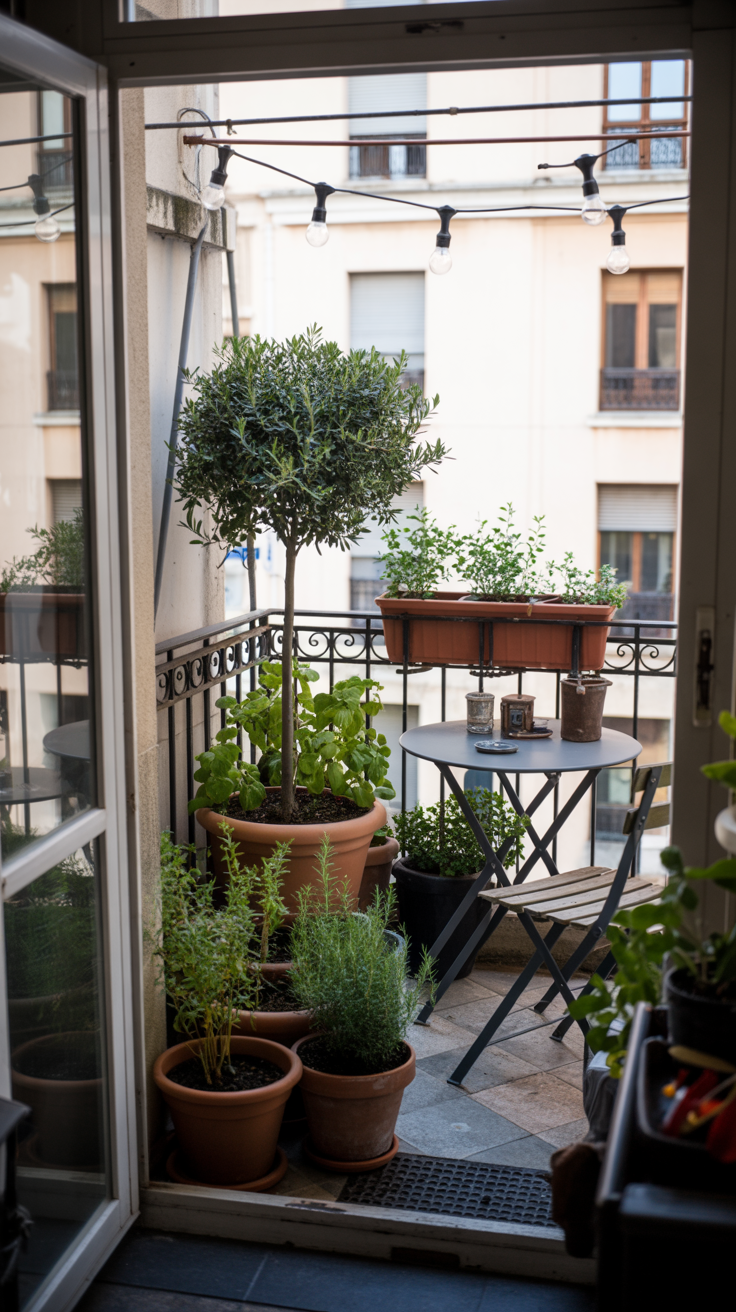
Mediterranean garden design works beautifully in small spaces. In fact, the intimate, enclosed nature of many Mediterranean gardens makes them perfect for urban yards or even balconies.
Focus on vertical gardening with climbing plants, use containers strategically, and create distinct “rooms” even in a small area. A small courtyard with a fountain, a bench, and some fragrant plants can capture the essence of Mediterranean style in a compact space.
The Emotional Benefits of Mediterranean Gardens

Beyond their beauty, Mediterranean gardens offer something deeper—a connection to a slower, more intentional way of living. In our fast-paced world, these gardens remind us to pause, breathe deeply, and appreciate simple pleasures.
There’s something about the combination of sunlight, fragrance, and the sound of water that calms the nervous system. Studies have shown that gardens designed with sensory elements in mind can reduce stress and improve mental well-being.
Mediterranean gardens also connect us to the rhythms of nature—the changing light throughout the day, the seasons, the cycles of growth and rest. In a world where we’re increasingly disconnected from these natural rhythms, a garden that encourages us to notice them can be profoundly healing.
Final Thoughts: Your Mediterranean Journey

Creating a Mediterranean garden is more than just a landscaping project—it’s about creating a lifestyle. It’s about designing spaces that draw you outside, that encourage you to slow down and savor the moment.
Whether you have a sprawling estate or a tiny balcony, whether you live in a sunny climate or a cool one, you can capture the essence of Mediterranean garden design. Start small, be patient, and let your garden evolve naturally.
Remember, the most beautiful gardens are those that reflect the people who create them. So take these Mediterranean garden design ideas and make them your own. Add personal touches, experiment with plants, and most importantly, spend time in your garden. That’s how it will truly come to life.
Your Mediterranean garden journey begins with a single step—or perhaps a single lavender plant. But where it leads is entirely up to you. I can’t wait to see what you create.
